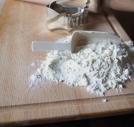Preventing Juvenile Diabetes
Juvenile diabetes (now more commonly known as type 1 diabetes or T1D) is an autoimmune disease that usually strikes children and young adults. The damage occurs when the body’s immune system attacks the pancreas, destroying insulin-producing cells. Children with T1D face a lifetime of insulin injections and elevated risks for the comorbidities that accompany diabetes: cardiovascular disease, kidney disease, neuropathic injury and so many more.
Unfortunately, as terrible a disease as this is, it cannot be prevented – yet.
The Juvenile Diabetes Foundation was founded in 1970 by a handful of parents whose children suffered from what was then referred to as juvenile diabetes. They organized and began to raise money for research.
Decades later, the focus of the organization has changed, because more than 8o% of those with type 1 diabetes are adults. The organization, renamed JDRF, continues to raise money, lobby members of congress and present a strong voice reminding the world that these children – and adults - need help.
The fact that there are substantially more adults than children afflicted with type 1 points to the progress being made in controlling the disease. Once upon a time, children were not likely to live much past their early 20s. Improved treatment plans have brought the lifespans of these children to near-normal.
Current Research Trends
T1D appears, statistically, to be somewhat influenced by genetic factors. While most cases occur in families where the disease has not previously appeared, children with a first-degree relative have a 1 in 20 chance of developing the disease, compared to a 1 in 300 risk for the larger population. Identical twins have a risk factor of both developing the disease that is greater than 60%. Fraternal twins have a risk factor between 6% and 10% that they will both develop the disease.
Despite this knowledge, no one can yet pin down a specific gene or specific set of factors that will guarantee a diagnosis of T1D.
Because researchers cannot point to the specific cause of T1D, they are unable to come up with either cure or prevention. There is a great deal of research looking for specific genetic markers and analyzing what “turns [these] genes on.” Viruses have been implicated as a trigger, and they are notoriously difficult to isolate, treat or prevent.
Other current research is seeking to minimize the impact of T1D. By aggressively working to prevent the further destruction of islet cells in those who are newly diagnosed, researchers hope to avoid the health risks inherent in long-term diabetes.
Clinical trials in all of these areas are currently underway. Those who wish to participate should check with their physician.
Sources: Juvenile Diabetes Research Foundation , Kid’s Health and WebMD
Photo by Keys Photography


































